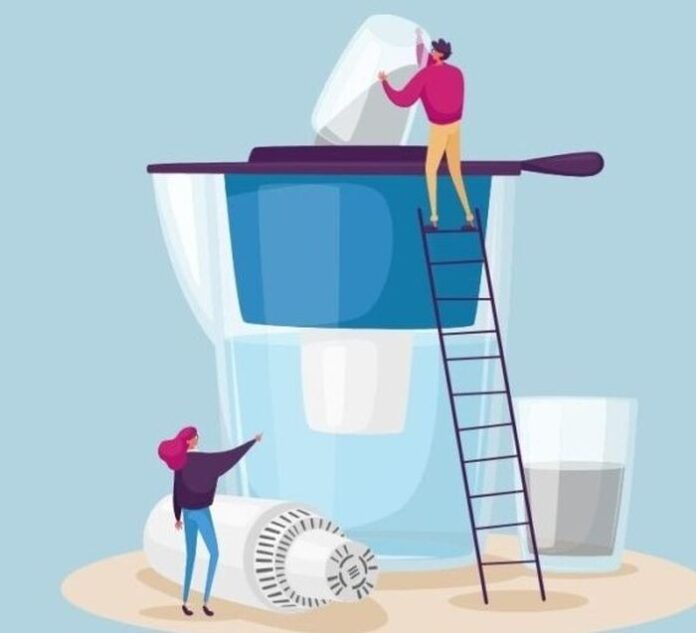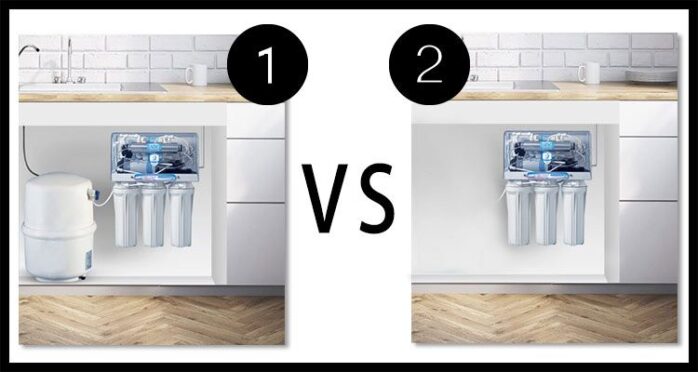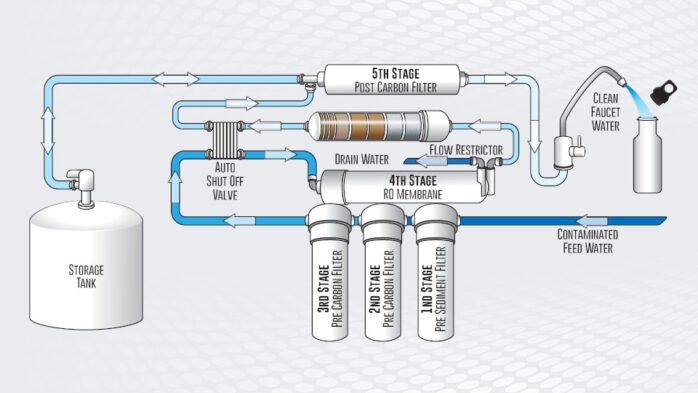
When it comes to reverse osmosis water purifiers, there exist two distinct types on the market. Both of them are useful but they are different in one major way. The first is a rank water system, and the second is a tankless water system. While the distinction may be more than clear from their name, there is much more to it than simple semantics. When it comes to customers and choosing the right model for their needs, there is a lot that is not clear to them in most cases. How does one choose between the two and does it matter which one you go with?
Of course it does, and in order to help you we are going to talk about the main differences between the two. By the end of this article you will know if you need a tank or a tankless reverse osmosis water system. Read on thoroughly until the end and be sure to check out ROanalyst for more information on water purifier systems, as well as some of the reviews of the best models available right now.
An Overview

With tank purifiers, there is a pressure tank that is used for closed water circulation in order to balance the pressure and the volume. This pressure tank allows for less frequent opening on safety valves and a more frequent replenishment of water that automatically goes through the valve. It basically extends the life of the whole purifier. What is more, the tank also helps with the supply of pure water in a household in case there is a problem with the pipeline or some other water supply issue.
On the other hand, reverse osmosis purifiers that are tankless lack a pressure tank, but this hardly means they are not useful. These purifiers are smaller, they give you more space to use in your kitchen or wherever you place then, and they help with slow water production that can be a problem with tank systems. Instead, you get instant filtering and drinking without any potential for secondary pollution. If is a simpler and straightforward solution, but you do not have anything to fall back on if your water supply stops.
Differences, Advantages, Disadvantages
Let us not touch upon the main advantages and disadvantages of each water purifier type and determine their biggest differences. They mostly have to deal with the occupied space, noise levels, water speed, failure rate, hygiene, and price.
Free Space
In terms of space that each system occupies, tank systems require more space because they have an additional pressure barrel. You get less floor space if you have a tank since the whole thing is larger. If you are tight on free space in your home, perhaps going tankless is the right move for you.
Noise
Noise from home appliances is not always the main factor in the ultimate decision between two types, but it can be one of the advantages. The technology behind reverse osmosis implies the need of water pumps, pressure barrels, and other intricate parts. Tank models, when full, stop purifying water. It does not start again until there is next to no water left in the tank. This means that the pump will not work continuously so there will be no noise most of the time, only when empty. On the other side we have tankless systems that have larger and nosier pumps. They work more frequently because they purify water on the spot. Tankless models are generally louder when they operate, but both have insulation cotton inside to limit the unwanted noise.
Pressure and Water Speed

With tank machines, obviously, there is a certain amount of water stored in a pressure barrel to use when needed. It comes out quickly when somebody needs to drink it since the pressure is high. The water production itself is fast, but it can never be as fast as the tank system. Instant filtering and drinking have their own advantages, but water speed and pressure are not among them. The water passes five filtration levels at once in tankless purifiers compared to a single one with tank ones. To put it in as few words as possible, the speed of the water output is better if you go with the tank.
Failure and Lifespan
Failure rate is definitely not something that customers want to be discussing when buying new kitchen appliances, but it needs to be covered. The tankless systems are able to deliver water as long as the faucet is operational. However, the more frequent the machine starts, the faster its aging will proceed particularly with the electrical components on the inside. The workload of tankless reverse osmosis purifiers is generally 3 to 4 times higher than tank systems. They switch on and off automatically and can never work when they do not have to. In conclusion, tank machines break less often and last longer than tankless machines because of the way they work and the load they are exposed to.
Hygiene
The question of hygiene is a no-brainer really, because the tank models are the obvious losers here. That is, if the water stays in the tank for too long without being consumed or replaced. There are many secondary pollutants that can ruin the purified water in the tank. Tankless systems do not experience this and are a much better solution hygiene-wise. But as long as the homeowners maintain the tank as it should be maintained, no hygiene problems will arise. The tank is pressurized after all, and it needs to stay pressurized for the water to be good because bacteria cannot enter nor survive that environment.
Price

Last but not least, there should be some words devoted to the pricing of both systems. Although smaller and with fewer parts, tankless systems are more expensive than tank systems. They are made with better materials than their tank cousins. Replacing the filters and general maintenance if something breaks is also more expensive with systems that have no tank to store water. There are numerous models with both types available for different price ranges, so you should be able to find yourself the right one no matter what you want.





